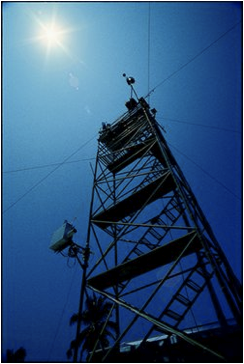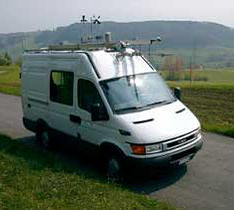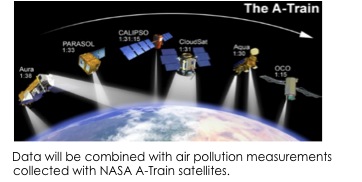While reduction in CO2 emissions has been at the forefront of many efforts to reduce global warming, the impact of reducing CO2 emissions will not be seen for decades due to its long lifetime in the atmosphere. Recently, attention has expanded to BC, methane and ozone which may contribute as much as CO2 to global warming. BC alone may be responsible for as much as 50% of the alarming retreat of the arctic sea ice and the Hindu Kush-Himalayan-Tibetan glaciers. Yet, because these pollutants have shorter lifetimes, any reduction in their emissions will be realized immediately.
Metaphorically, Surya will create a BC hole in the intervention region within weeks of introducing the energy-efficient technologies. The goal is to detect and measure this signal.
We will install instrument towers at the boundaries of the village to collect data  throughout the duration of the intervention. Instruments will measure a comprehensive list of aerosol, gas, and radiation parameters, such as carbon monoxide, PM2.5, and aeorosl absorption and scattering will be installed in an outdoor monitoring station.
throughout the duration of the intervention. Instruments will measure a comprehensive list of aerosol, gas, and radiation parameters, such as carbon monoxide, PM2.5, and aeorosl absorption and scattering will be installed in an outdoor monitoring station.
 Additionally, a mobile van will be instrumented with aerosol and black carbon instruments. The mobile observatory will measure a subset of homes.
Additionally, a mobile van will be instrumented with aerosol and black carbon instruments. The mobile observatory will measure a subset of homes.
In addition to indoor and outdoor surface measurements, the controlled region and the surrounding villages will also be monitored using air pollution instruments on satellites (A-Train satellites by NASA shown below). The satellite measurement program will include satellite-based observations of aerosols, CO, Ozone, and clouds. The tower observations will be used to calibrate the satellite data which in turn will be used to look at the impact on the entire intervention region and regions outside of its boundary.

Next: Mobile Phone Technology
